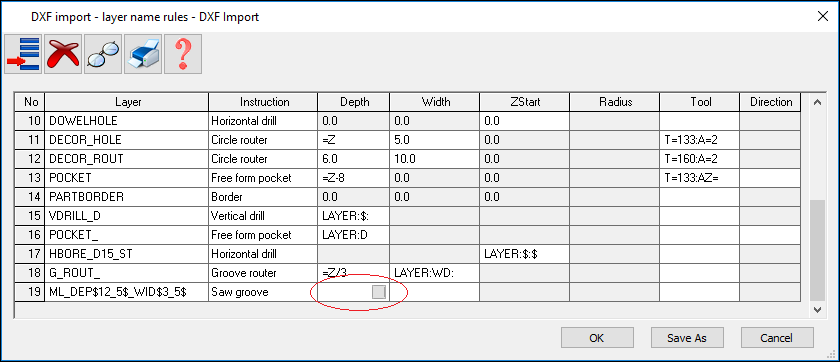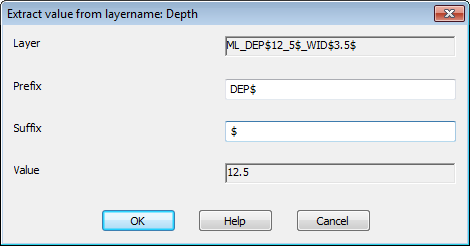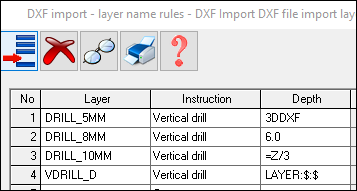

How to get data from a layer name
Layer names inside DXF files can include data for fields (e.g. width, depth, ZStart or Radius). The DXF import - layer names rules can be setup to get this data and pass it to the imported machine instruction,
For example instead of a fixed layer name, e.g. DRILLHOLE, there may be a layer name including some data.
ML_DEP$12_5$_WID$3_5$
For example, a saw groove with depth of 12.5 and width of 3.5.

To extract the data click on the required column (e.g. Depth) and click the list box.
 - extract
data
- extract
data
The data extract dialog is shown.

- Enter the text before and the text after the value required.
The value is shown in the bottom box. This is the value used in the machining instruction.
After OK is selected the layer name in the main grid will now show a shortened version without the prefix/suffix information.
Importing DXF depths
The depths of geometry in DXF files can be used during the import for the depths of the instructions. In order to use this, the depth column in the DXF import layer name rules parameter needs to be set to 3DDXF.
Note - such DXF files are not true solid 3D DXF files, but DXF files containing 2D objects with thickness value. They are also sometimes referred to as 2½ D
e.g

If there is no depth within the geometry then the depth can be specified as a number, formula or extracted from the layer name as before.
The depth can be taken from the DXF geometry and used for the following instruction types:
Vertical drilling, Horizontal drilling
Saw groove, groove routs
Pockets
Free form pockets
Contours
For saw grooves and groove routs, the width of the cut is taken from the layer name
E.g GROOVE_T{SAWX}LW7.5
After the '}' the L means the rout to the left, R means the rout to the right and neither means rout down the centre. The value specified after the W refers to the width (e.g 7.5)
Free form pockets and their depths can be extracted from either polylines or circles.
See the help topic: Using parts and patterns with the DXF format - Overview